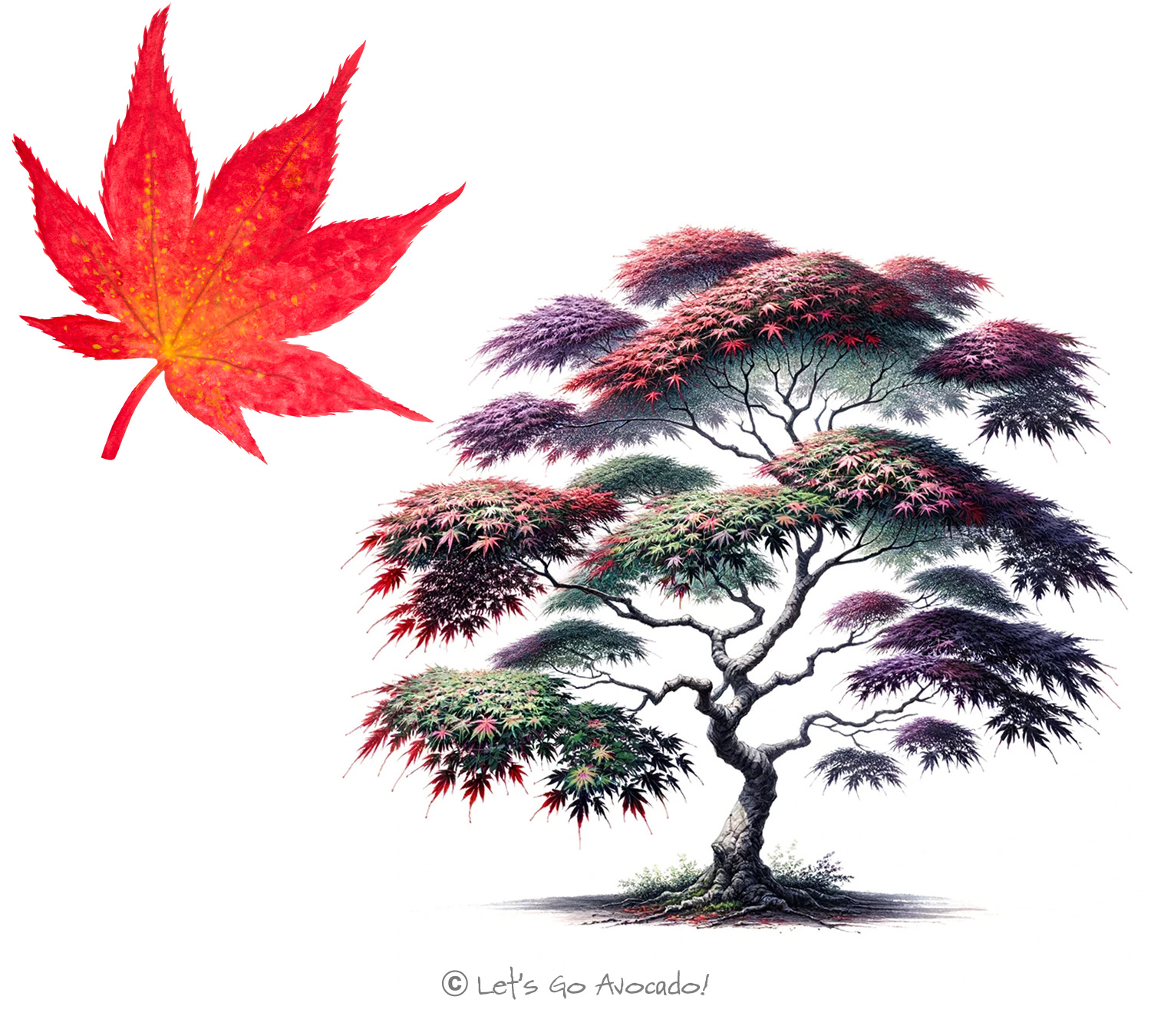The Japanese Maple Tree: An Artistic Display in Nature
Welcome, young explorers, to the enchanting world of the Japanese Maple tree, known scientifically as Acer palmatum. This tree, celebrated for its stunning beauty and unique leaf shapes, is a favorite in gardens and landscapes around the world. Native to Japan, Korea, and China, the Japanese Maple has captivated people with its variety of forms and spectacular seasonal colors. Let’s delve into the world of this elegant tree and discover its special qualities and contributions to its environment.
Characteristics of the Japanese Maple
The Japanese Maple is famous for its diverse range of leaf shapes and colors. Its leaves can be palmate like a hand with outstretched fingers, or finely dissected, resembling delicate lace. In autumn, these leaves transform into brilliant shades of red, orange, and yellow, creating a breathtaking display. The tree’s structure, often graceful and sculptural, adds to its ornamental appeal.
Size and Growth Patterns
Japanese Maples are generally small to medium-sized trees, typically growing to about 15-25 feet (4.5-7.5 meters) in height. Their growth pattern varies greatly among the numerous cultivars, ranging from upright and branching to weeping forms. This versatility in size and shape makes them a perfect fit for diverse garden settings.
Lifecycle and Adaptation
The lifecycle of the Japanese Maple includes a flowering period in spring, followed by the development of small, winged seeds known as samaras. These seeds are spread by the wind, giving rise to new trees. Japanese Maples thrive in well-drained soil and prefer a balance of sunlight and shade. Their adaptability to different climatic conditions and pruning practices makes them popular in horticulture.
Ecological Role
While primarily known for their ornamental value, Japanese Maples do contribute to their ecosystems. In garden settings, they provide habitat for various bird and insect species. Their diverse leaf forms and colors add to the biodiversityBiodiversity refers to the variety of living things in an ecosystem. The more biodiversity there is in an ecosystem, the healthier and stronger it is. of planted landscapes.
Resilience and Environmental Interaction
Japanese Maples, though seemingly delicate, possess a resilience that allows them to thrive in various environments. They can be sensitive to extreme weather conditions but with proper care, they prove to be enduring additions to gardens and landscapes.
Significance in Human Culture
The Japanese Maple holds a special place in many cultures, particularly in Japan, where it is celebrated for its beauty and symbolic meanings. The tree is a popular choice in bonsai art, representing peace and serenity. Its aesthetic appeal has made it a beloved feature in gardens worldwide.
The Japanese Maple tree, with its artistic form and vibrant colors, brings a unique beauty to any setting it graces. These trees, with their varied shapes and stunning fall colors, provide enjoyment and tranquility in gardens and landscapes. The Japanese Maple is not just an ornamental tree; it’s a living work of art, enhancing the beauty of our natural and cultivated environments and supporting the wildlife that inhabits them.
As you continue to explore nature and gardens, take a moment to admire the Japanese Maple trees you encounter. Each one, with its intricate leaves and elegant stature, plays a role in adding beauty and diversity to our surroundings. Keep exploring, and you’ll discover the many wonders and stories that trees like the Japanese Maple share with us.










